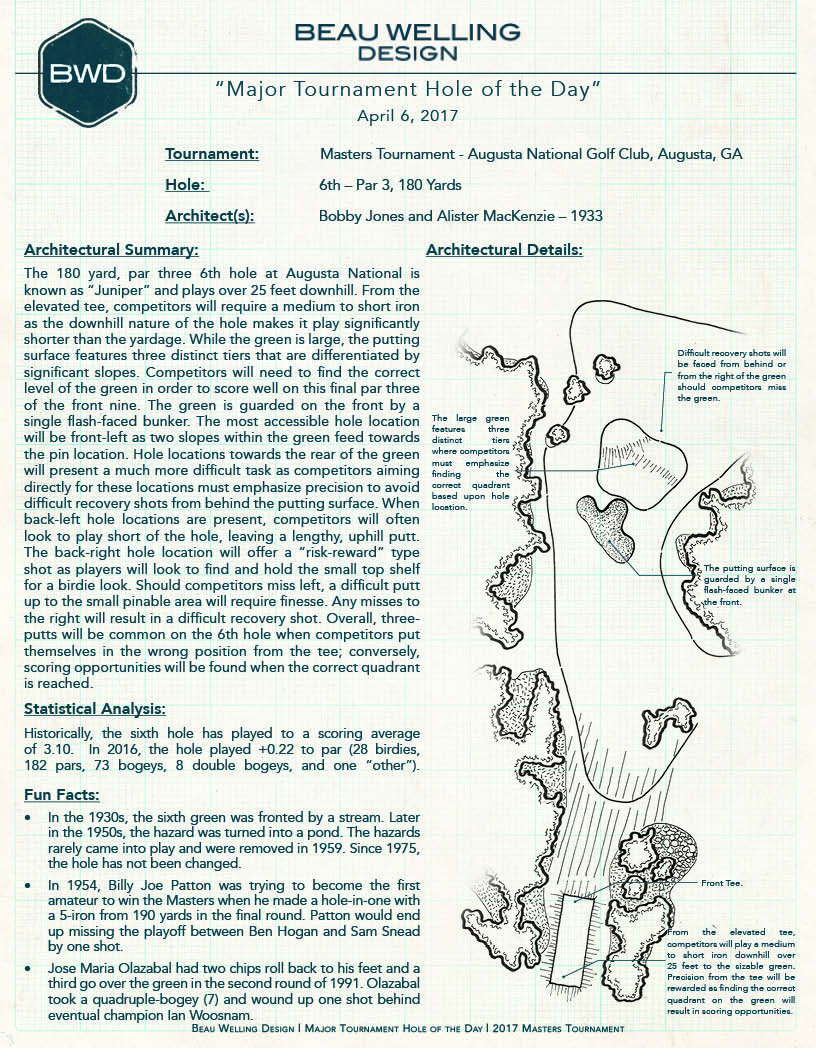Tournament: Masters Tournament – Augusta National Golf Club, Augusta, GA
Hole: 6th – Par 3, 180 Yards
Architect(s): Bobby Jones and Alister MacKenzie – 1933
Architectural Summary:
The 180 yard, par three 6th hole at Augusta National is known as “Juniper” and plays over 25 feet downhill. From the elevated tee, competitors will require a medium to short iron as the downhill nature of the hole makes it play significantly shorter than the yardage. While the green is large, the putting surface features three distinct tiers that are differentiated by significant slopes. Competitors will need to find the correct level of the green in order to score well on this final par three of the front nine. The green is guarded on the front by a single flash-faced, greenside bunker. The most accessible hole location will be front-left as two slopes within the green feed towards the pin location. Hole locations towards the rear of the green will present a much more difficult task as competitors aiming directly for these locations must emphasize precision to avoid difficult recovery shots from behind the putting surface. When back-left hole locations are present, competitors will often look to play short of the hole, leaving a lengthy, uphill putt. The back-right hole location will offer a “risk-reward” type shot as players will look to find and hold the small top shelf for a birdie look. Should competitors miss left, a difficult putt up to the small pinable area will require finesse. Any misses to the right will result in a difficult recovery shot. Overall, three-putts will be common on the 6th hole when competitors put themselves in the wrong position from the tee; conversely, scoring opportunities will be found when the correct quadrant is reached.
Statistical Analysis:
Historically, the sixth hole has played to a scoring average of 3.10. In 2016, the hole played +0.22 to par (28 birdies, 182 pars, 73 bogeys, 8 double bogeys, and one “other”).
Fun Facts:
- In the 1930s, the sixth green was fronted by a stream. Later in the 1950s, the hazard was turned into a pond. The hazards rarely came into play and were removed in 1959. Since 1975, the hole has not been changed.
- In 1954, Billy Joe Patton was trying to become the first amateur to win the Masters when he made a hole-in-one with a 5-iron from 190 yards in the final round. Patton would end up missing the playoff between Ben Hogan and Sam Snead by one shot.
- Jose Maria Olazabal had two chips roll back to his feet and a third go over the green in the second round of 1991. Olazabal took a quadruple-bogey (7) and wound up one shot behind eventual champion Ian Woosnam.

